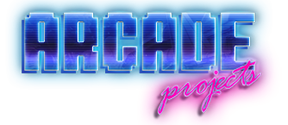Hello guys,
Here’s a small French project that finally came to life after several months of intense dev/testing !
Thanks to everyone who contributed with their console and thanks to my personal consoles
The Neopass project was originally created for my personal needs. The goal of the Neopass projects is to make the AES bypass process more reliable, cleaner, faster, and to achieve optimal video performances output quality once the mod is done. Everyone should be able to perform a bypass easily, with fewer wires, reliable components, and excellent results (no more dangling resistors or forgotten capacitors!).
Original French thread here : https://www.neogeo-system.com/t15815-module-neopass-le-rgb-by-pass-aes-simplifie
Also providing the best image for the best possible experience on the AES plateform is for me an evidence : the community, like myself, is demanding, so the challenge is a big one!

Neopass module for NeoGeo AES, Awaken the beast !
the shop : http://www.nic034.fr

Note : This project doesn’t claim to be the absolute best, but it definitely holds its own. The result depends a lot on the installation quality: the image becomes noticeably sharper and outstanding, colors are deeper and more vivid, and the signal coming out of the PCB is highly stable ensuring great compatibility with various display devices. Choosing to follow the original datasheets was, in my opinion, the best way to respect SNK’s work and to achieve an image as faithful as possible to the original intended output without relying on composite video.
From a technical perspective, I chose to keep the capacitors on the RGB lines, in accordance with the CXA1145p datasheet (which recommend them to eliminate the DC offset). For now, I’m using the sync output of the encoder (rather than the input) which do finally the best job. The composite video signals is no more present after modification.
--
Component values for versions 3-3/3-4:
--
The installation procedure for the kit is currently available at the bottom of the shop page (n00b tested and validated). In short: you remove the original capacitors and resistors on the output lines, place the PCB according to your console version, and finish by connecting the sync power wire. The project is currently powered using EasyEDA Pro through JLCPCB/LCSC, and it is not open-source at the moment. The chosen thickness for the double-layer PCB is 0.8 mm. I do have a small stock available if you’re interested and would like to try it out (I’ve set up a small shop for that purpose). delivery worldwide using tracking letter is support (including japan)
--
on the stage :

Video sample (iPhone picture) : https://streamable.com/2x1njy
3-5/3-6 version


3-3/3-4 version :


Photo of an LCD TV with or without upscaler, taken with a mobile phone.




Here’s a small French project that finally came to life after several months of intense dev/testing !
Thanks to everyone who contributed with their console and thanks to my personal consoles
The Neopass project was originally created for my personal needs. The goal of the Neopass projects is to make the AES bypass process more reliable, cleaner, faster, and to achieve optimal video performances output quality once the mod is done. Everyone should be able to perform a bypass easily, with fewer wires, reliable components, and excellent results (no more dangling resistors or forgotten capacitors!).
Original French thread here : https://www.neogeo-system.com/t15815-module-neopass-le-rgb-by-pass-aes-simplifie
Also providing the best image for the best possible experience on the AES plateform is for me an evidence : the community, like myself, is demanding, so the challenge is a big one!
Neopass module for NeoGeo AES, Awaken the beast !
the shop : http://www.nic034.fr
Note : This project doesn’t claim to be the absolute best, but it definitely holds its own. The result depends a lot on the installation quality: the image becomes noticeably sharper and outstanding, colors are deeper and more vivid, and the signal coming out of the PCB is highly stable ensuring great compatibility with various display devices. Choosing to follow the original datasheets was, in my opinion, the best way to respect SNK’s work and to achieve an image as faithful as possible to the original intended output without relying on composite video.
From a technical perspective, I chose to keep the capacitors on the RGB lines, in accordance with the CXA1145p datasheet (which recommend them to eliminate the DC offset). For now, I’m using the sync output of the encoder (rather than the input) which do finally the best job. The composite video signals is no more present after modification.
--
Component values for versions 3-3/3-4:
- RGB lines: 143Ω resistors 0805 (1% tolerance or better), tantalum capacitors (Case D 7343) rated at 6.3V 470μF.
- Sync line (taken from the encoder’s sync output): 75Ω resistor and a 6.3V 470μF tantalum capacitor (Case D 7343).
- These versions provide both composite sync and clean sync, and I’ve ensured both outputs now carry the same signal.
- RGB lines: 150Ω resistors 0805 (1% tolerance or better), tantalum capacitors (Case D 7343) rated at 6.3V 470μF.
- Sync line (also taken from the encoder’s sync output): 75Ω resistor and a 6.3V 470μF tantalum capacitor (Case D 7343).
- These versions originally only had composite sync, so the visual improvement is significant—sharper image, less blur, etc.
--
The installation procedure for the kit is currently available at the bottom of the shop page (n00b tested and validated). In short: you remove the original capacitors and resistors on the output lines, place the PCB according to your console version, and finish by connecting the sync power wire. The project is currently powered using EasyEDA Pro through JLCPCB/LCSC, and it is not open-source at the moment. The chosen thickness for the double-layer PCB is 0.8 mm. I do have a small stock available if you’re interested and would like to try it out (I’ve set up a small shop for that purpose). delivery worldwide using tracking letter is support (including japan)

--
on the stage :
Video sample (iPhone picture) : https://streamable.com/2x1njy
3-5/3-6 version
3-3/3-4 version :
Photo of an LCD TV with or without upscaler, taken with a mobile phone.
Last edited:

